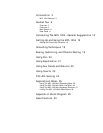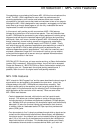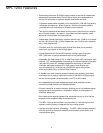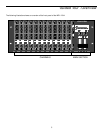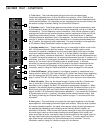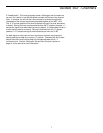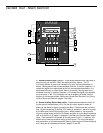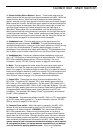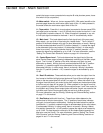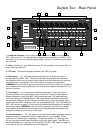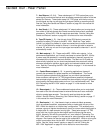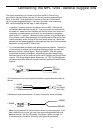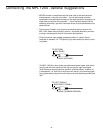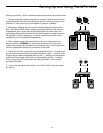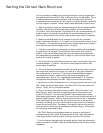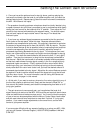
Guided Tour - Main Section
certain that one or more connected mics require 48 volts phantom power, leave
this switch off (its out position).
10: Meter switch - When out, the ten-segment MPL 1204 meter (see #6 on the
previous page) shows the continuous output level of Bus 1-2; when pressed in,
the meter shows the continuous output level of Bus 3-4.
11: Tape switch - Press this in to route signal connected to the rear panel RCA
jack tape inputs to channels 11 and 12 (the left side is routed to channel 11 and
the right side is routed to channel 12). When this switch is pressed in, any mic
or line input signal connected to channels 11 and 12 is automatically muted.
12: Main Level - This knob determines the final signal level of the rear panel
Main output—you can think of it as being the “master fader.” The 2 o’clock “0”
position of the knob indicates unity gain (no level attenuation or boost). Moving
the knob counterclockwise from the “0” position (towards “∞”) causes the signal
to be attenuated (at the very bottom, it is attenuated infinitely—in other words,
there is no sound). Moving it clockwise from the “0” position (towards “+10”)
causes the signal to be boosted by up to 10 dB. For more information, see the
“Setting The Correct Gain Structure” section on page 14 in this manual.
13: Control Room Level - This knob determines the signal level of the rear
panel Control Room output, allowing independent monitoring of the Main output
signal. The 2 o’clock “0” position of the knob indicates unity gain (no level
attenuation or boost). Moving the knob counterclockwise from the “0” position
(towards “∞”) causes the signal to be attenuated (at the very bottom, it is
attenuated infinitely—in other words, there is no sound). Moving it clockwise
from the “0” position (towards “+10”) causes the signal to be boosted by up to
10 dB.
14: Bus L/R switches - These switches allow you to route the output from the
four buses to the Main left/right output jacks and Control Room left/right output
jacks on the rear panel (see #10 and #11 on page 10). When this switch is up,
the signal from that bus is not routed to the main outputs and instead terminates
at its Bus out jack (see #12 on page 10). When pressed in, the signal from that
bus is routed to the Main and Control Room outputs (buses 1 and 3 are routed to
the left Main and Control Room output jacks and buses 2 and 4 are routed to the
right Main and Control Room output jacks) as well as to its Bus out jack.
For more information, see the “Busing, Submixing and Channel Muting” section
on page 17 in this manual.
15: Bus Faders (white with blue line) - These linear sliders determine the
relative level of the four bus outputs. The “0” position of each fader indicates
unity gain (no level boost or attenuation). Moving the fader below this position
(towards the “∞” position) causes the signal to be attenuated (at the very bottom,
it is attenuated infinitely—in other words, there is no sound). Moving it above
this position (towards the “+10 dB” position) causes the signal to be boosted by
up to 10 dB. For best signal-to-noise ratio, all Bus faders should generally be
kept at or near the 0 level. For more information, see the “Setting The Correct
Gain Structure” and the “Busing, Submixing and Channel Muting” sections on
pages 14 and 17 in this manual.
10



